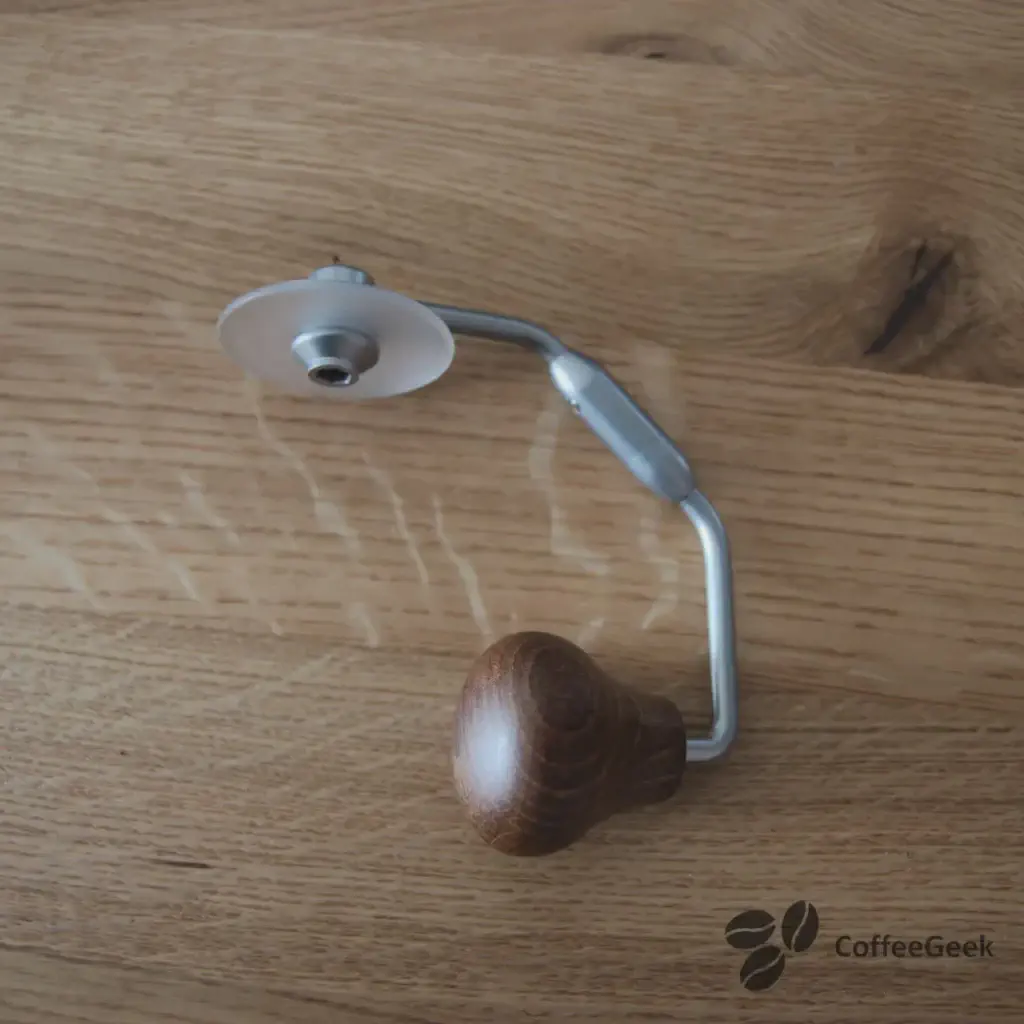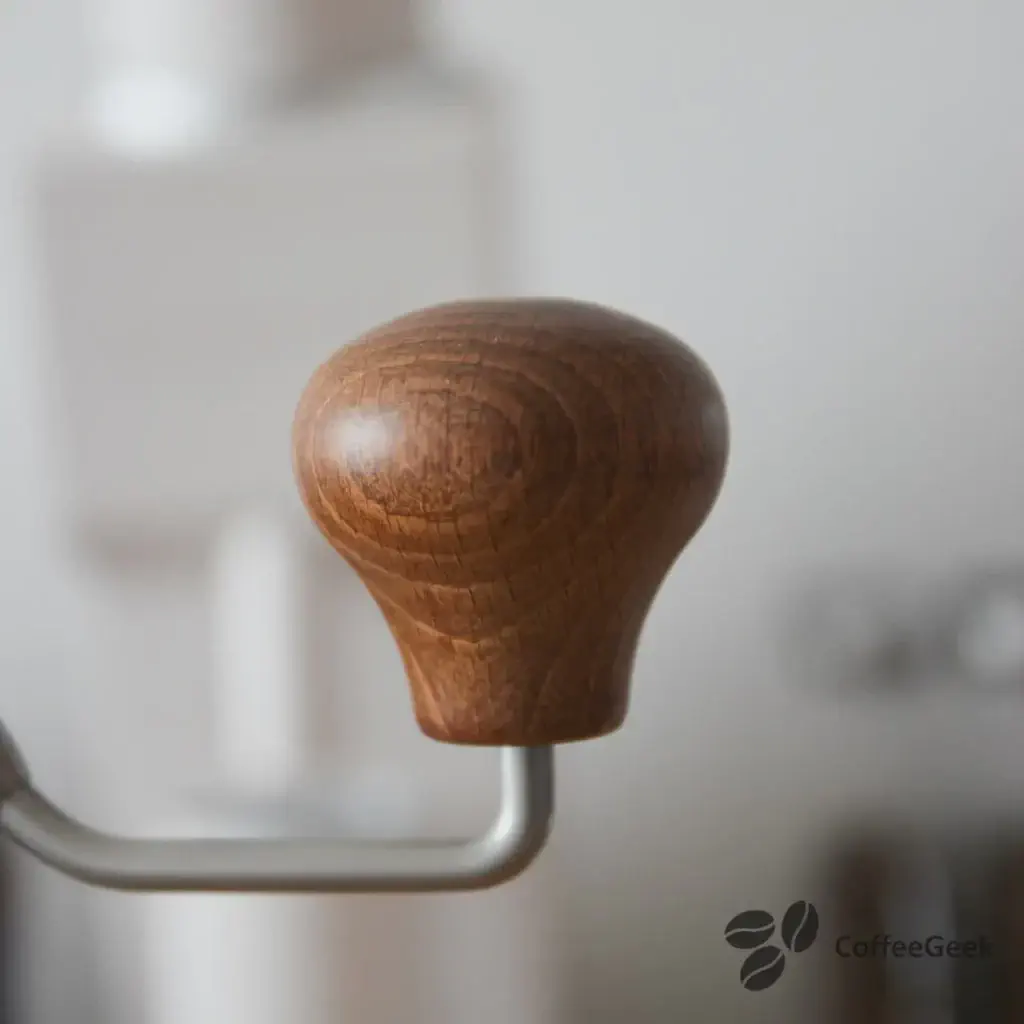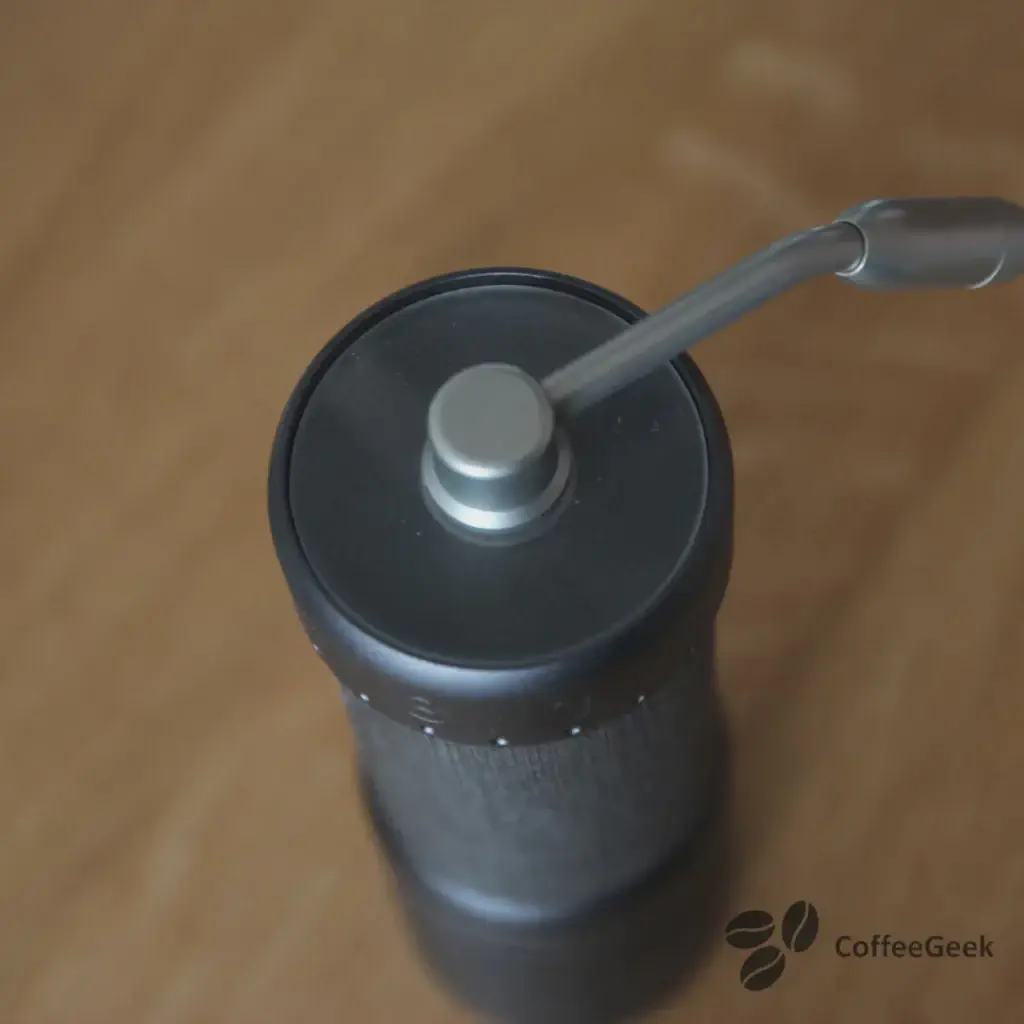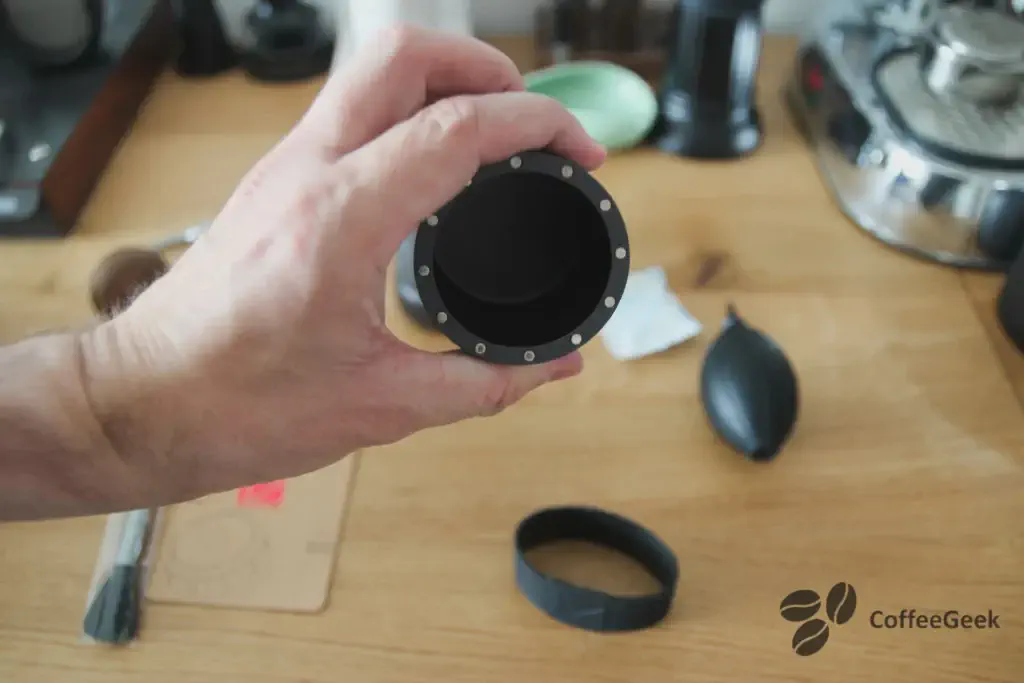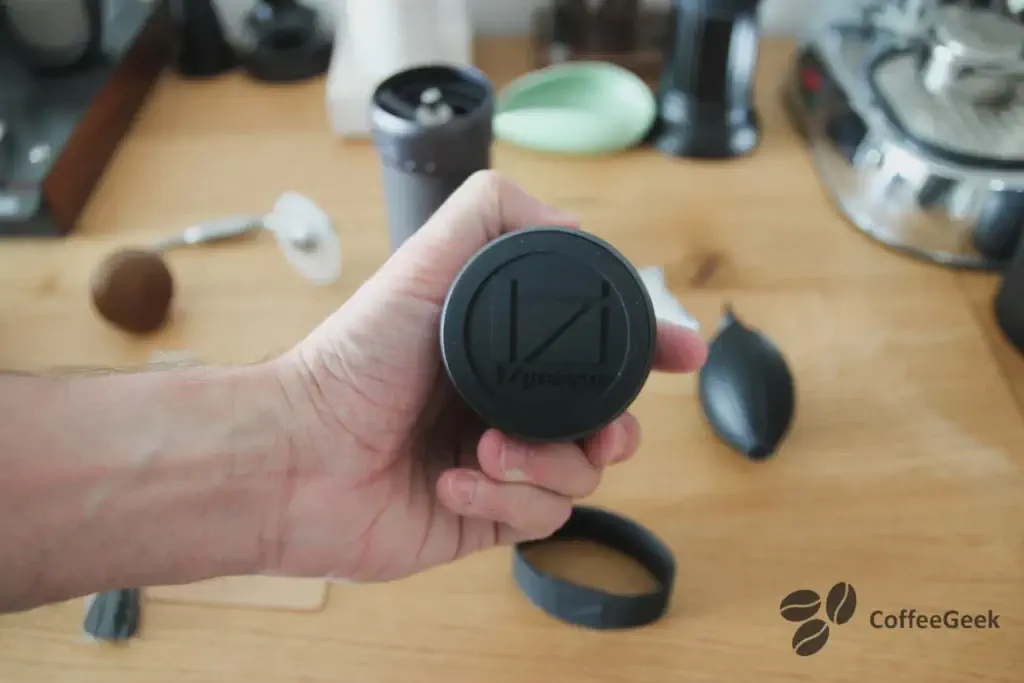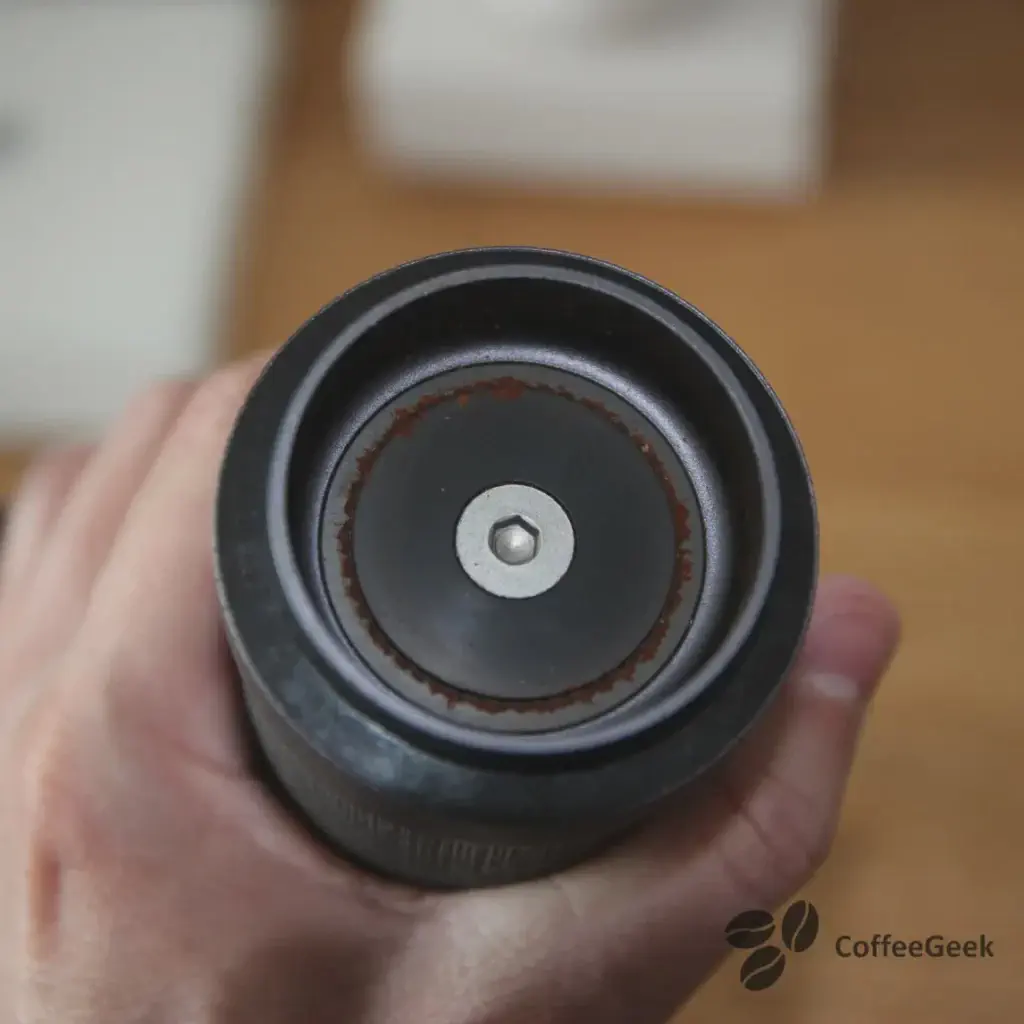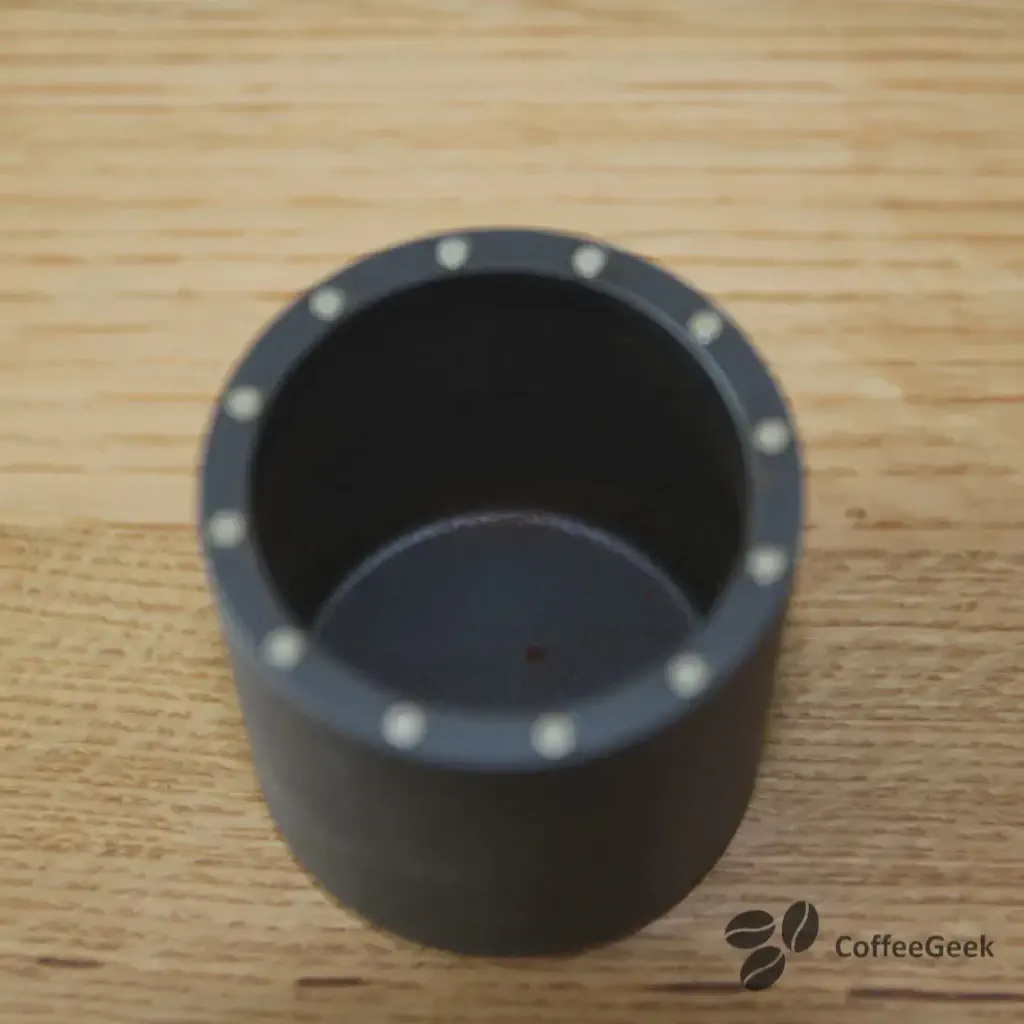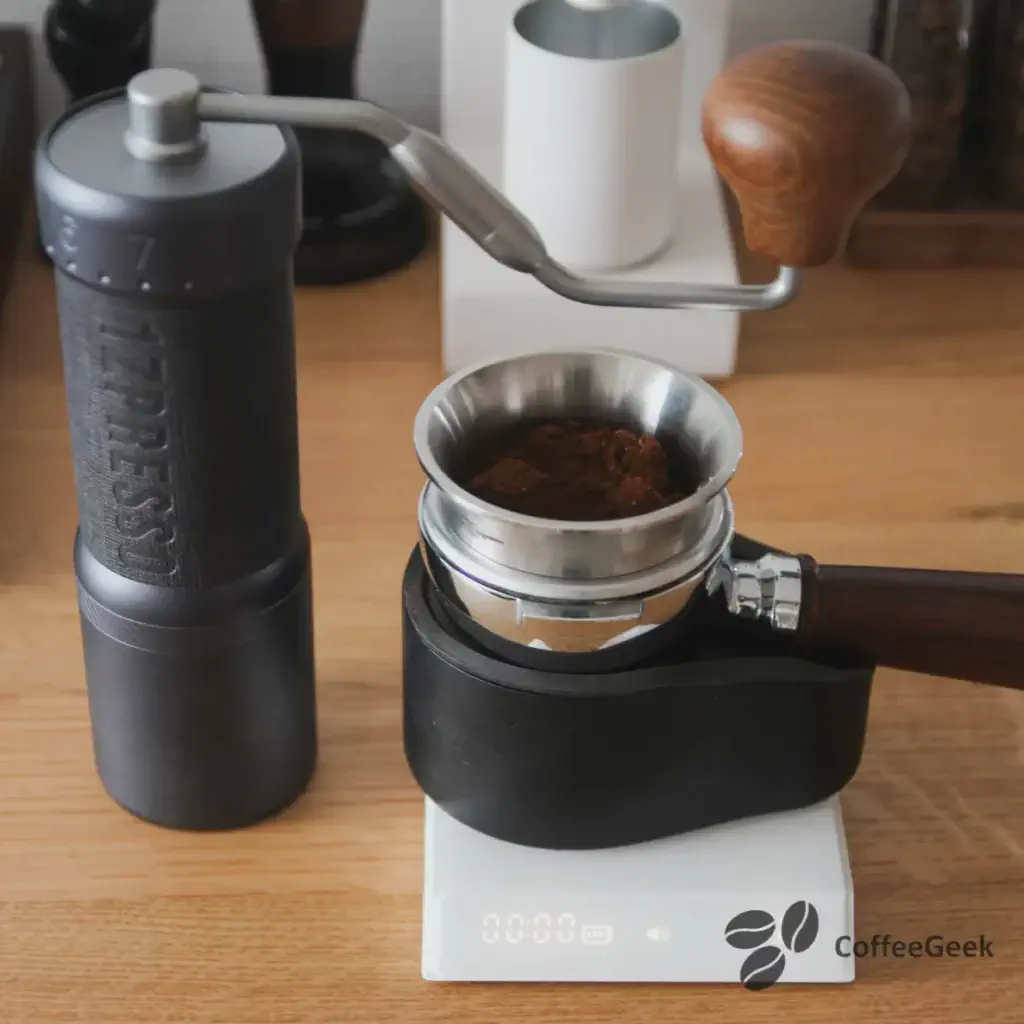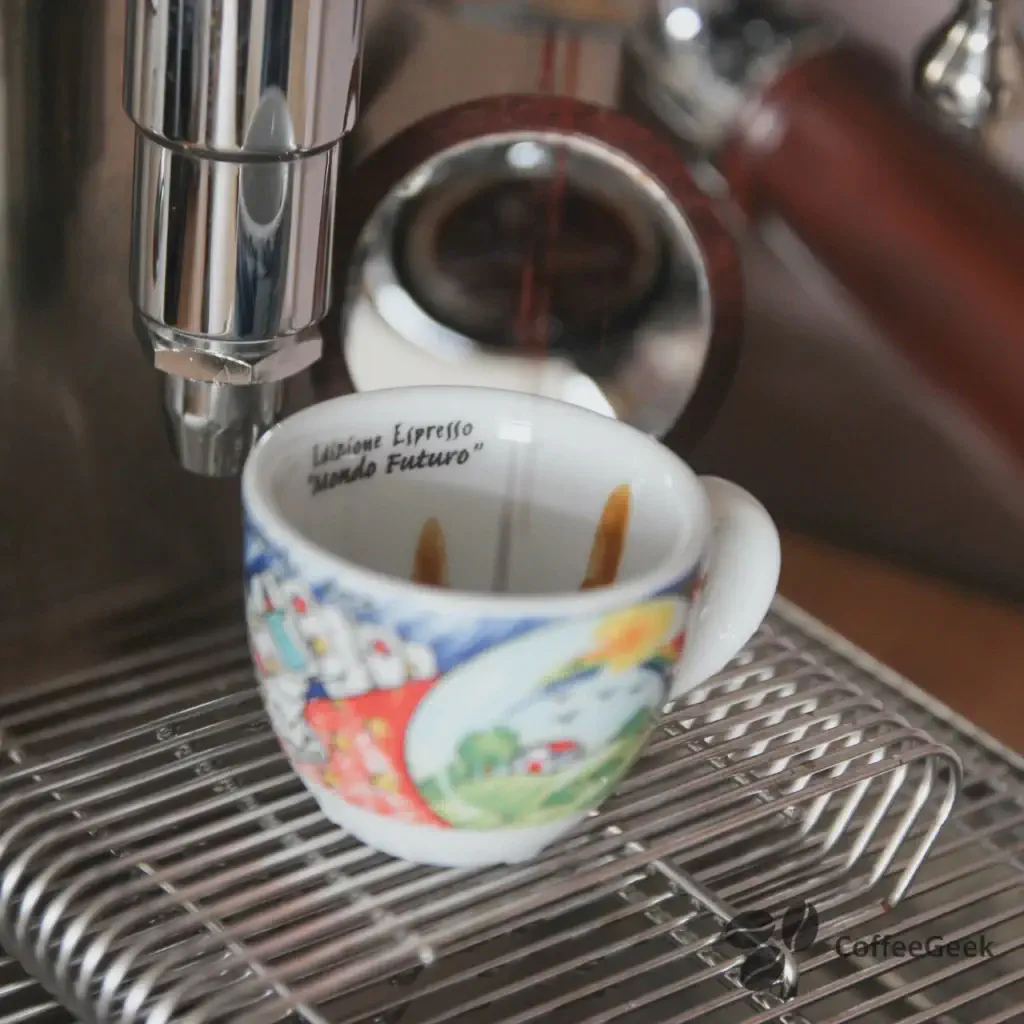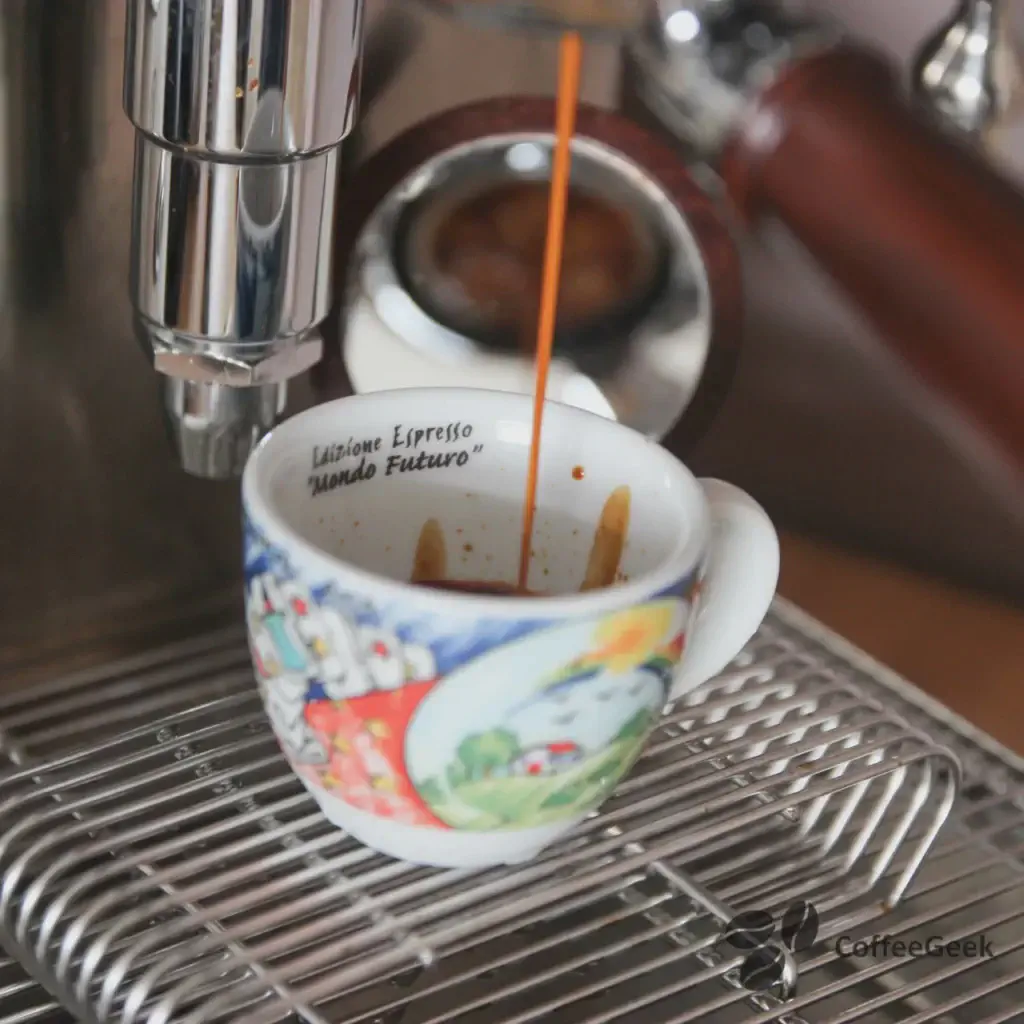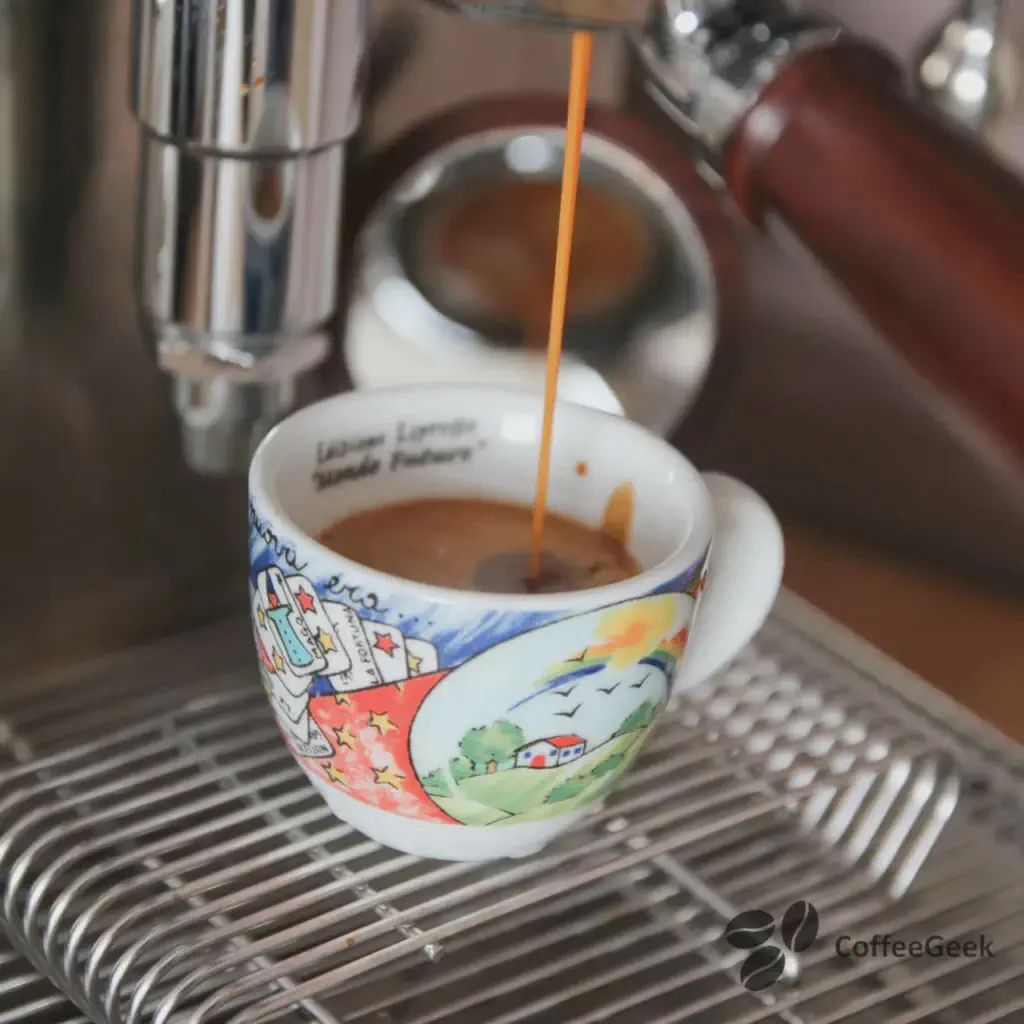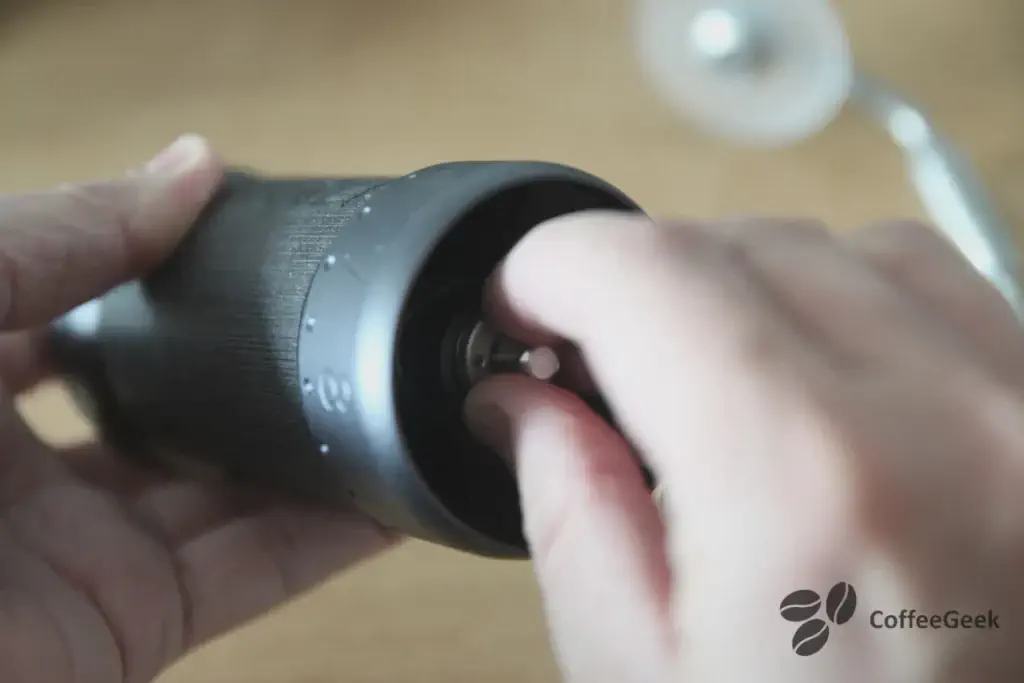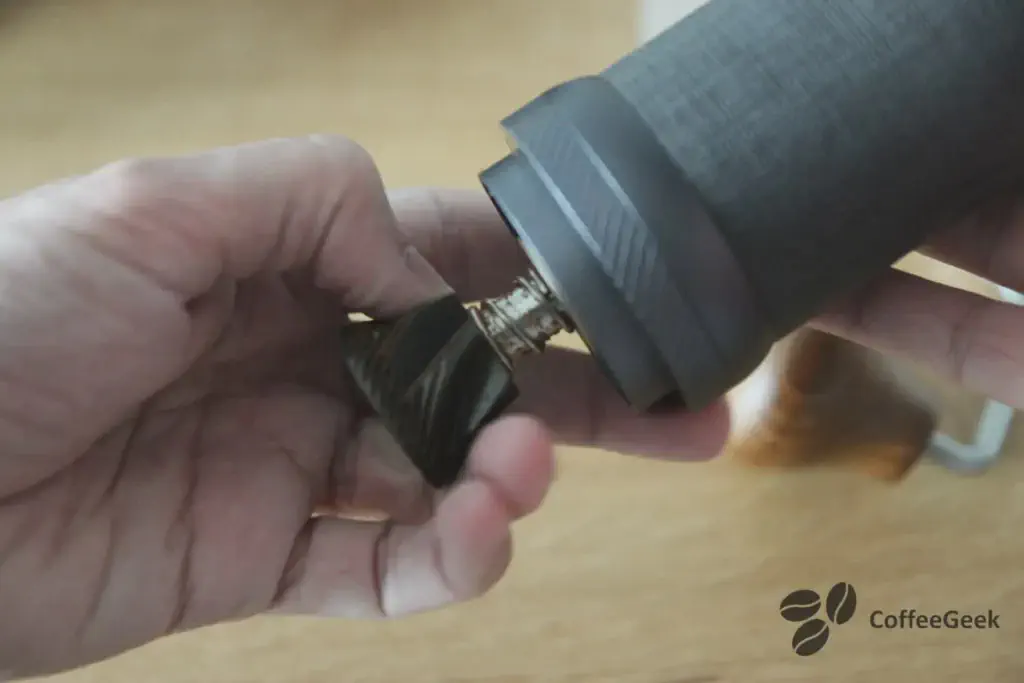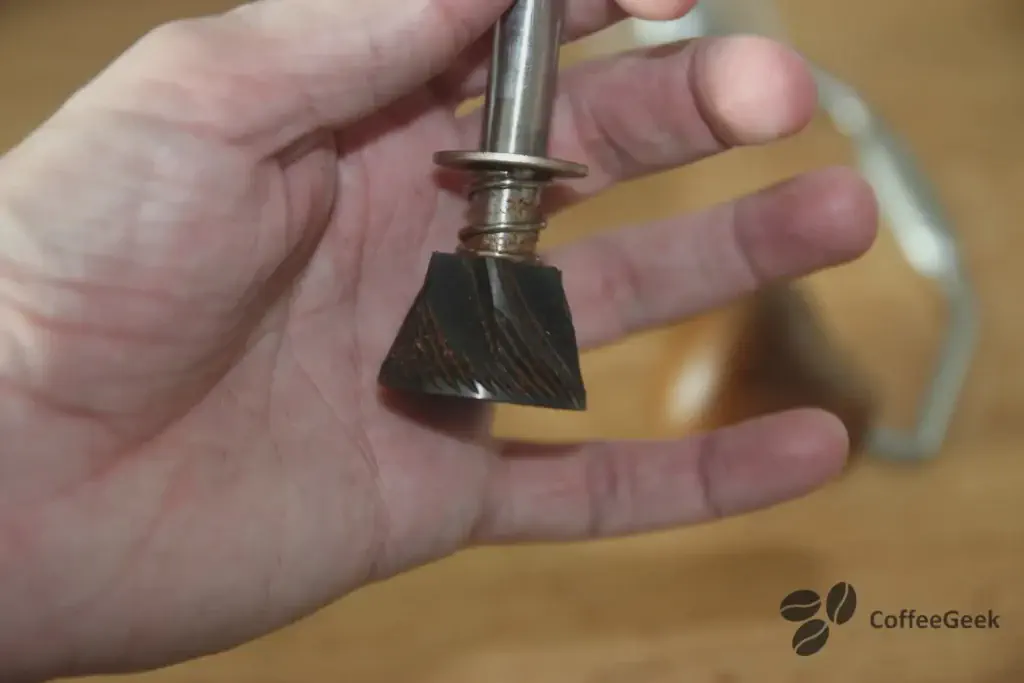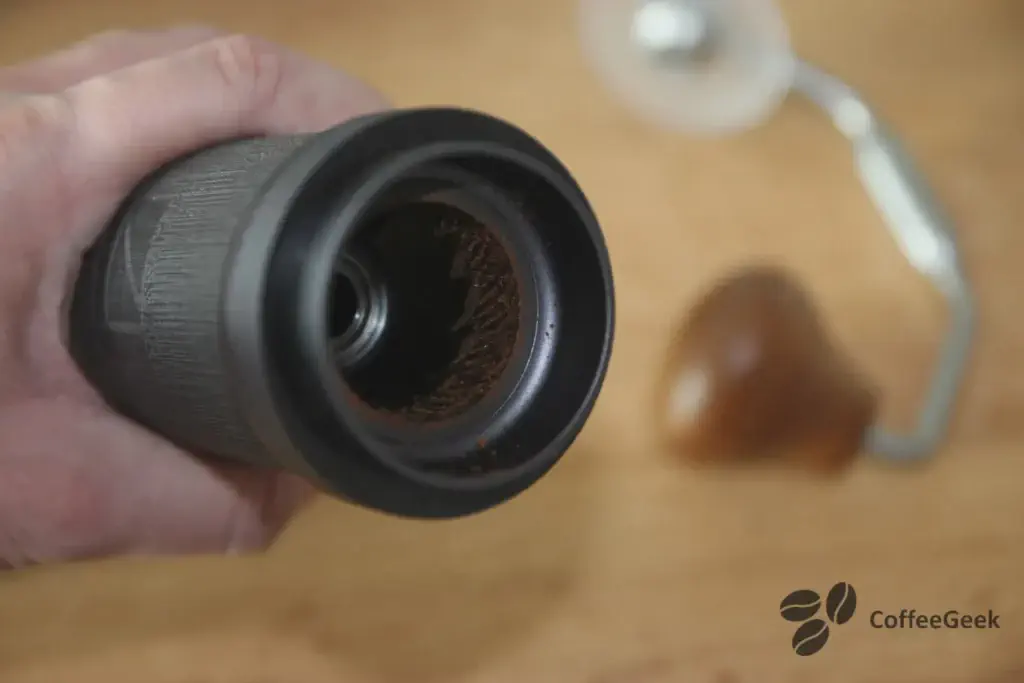1Zpresso J-Ultra Coffee Grinder Review: A Premium Choice For Espresso

Discover the 1Zpresso J-Ultra coffee grinder, an essential choice for espresso enthusiasts who appreciate superior quality and practical features. In this article, I share my personal experience and highlight the notable differences compared to the previous model, the J-Max. You’ll also be able to appreciate the elegant design and technical characteristics of this high-end tool. Dive into the world of refined coffee with this premium option and explore my usage tips to get the most out of it.
Lately, I’ve noticed that I was often recommending the 1Zpresso J-Ultra as an excellent coffee grinder for espresso. The only problem is that I hadn’t yet written a user review for you. In truth, I already owned the J-Ultra’s big brother, the J-Max. The only difference between the two grinders is that one has a retractable crank and the other doesn’t.
This retractable crank is the result of an attempt by a competing German brand that filed a complaint (because of the crank’s shape) against 1Zpresso to block sales in Europe. So, 1Zpresso was forced to modify the crank on some of its grinders, including the J-Max, in order to continue selling it in Europe under the name J-Ultra.
So I purchased the J-Ultra in order to present it to you.
Unboxing the 1Zpresso J-Ultra
The coffee grinder comes with several accessories:
- Carrying case
- Brush for cleaning the grinder
- Small bellows
- Silicone strap, to install on the grinder according to your preference
- Card with a QR code, redirecting to the user manual
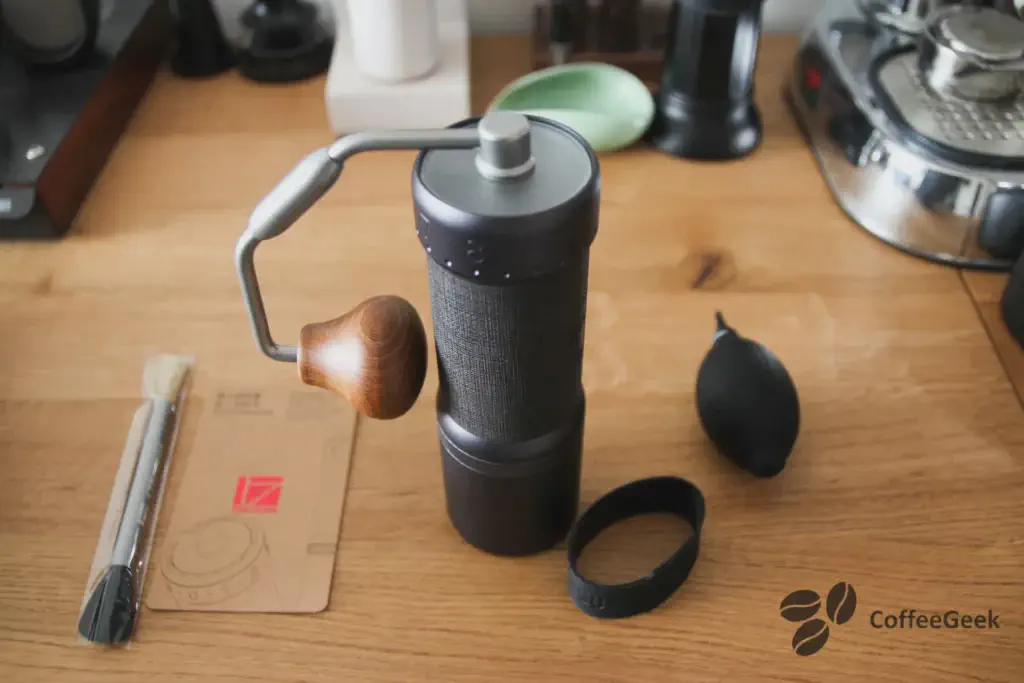
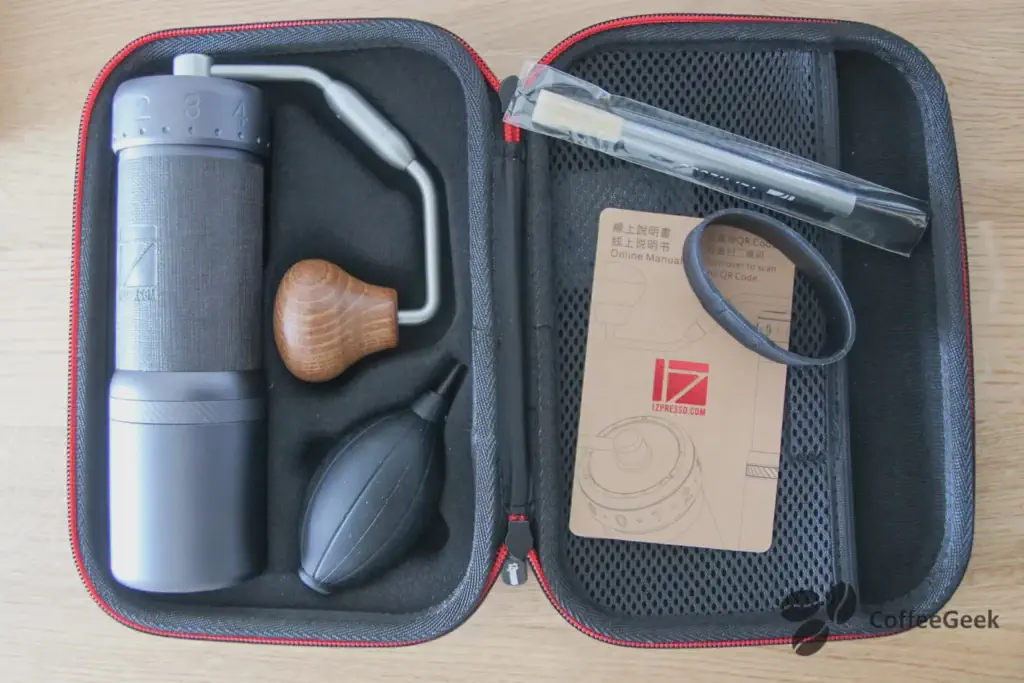
The accessories are of high quality.
1Zpresso J-Ultra Design
When you first hold the J-Ultra, you immediately feel a sense of quality. Very honestly, you know right away that it’s not playing in the same league as the Kingrinder I tested previously. Before detailing each part of the grinder, here’s my overall impression.
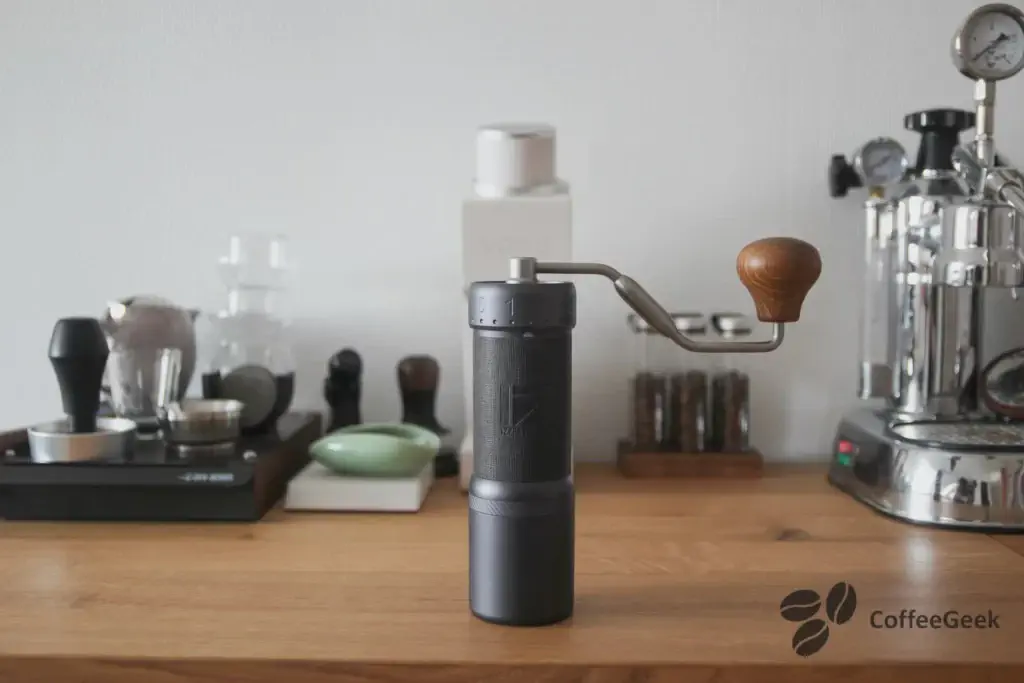
The 1Zpresso is heavier, its magnetic catch cup is firmly secured thanks to its numerous magnets, and the grinder is well-balanced, with a center of gravity low enough to prevent it from tipping over easily. The adjustment dial is really pleasant to use, offering some resistance with each click, and the settings are so fine (8 µm) that it makes this a coffee grinder totally dedicated to espresso.
Main Coffee Grinder Features
Here are the main features of the 1Zpresso J-Ultra manual coffee grinder:
- Precise adjustment: 8 microns per click
- Burrs: 48mm burrs, optimized for espresso
- Materials: Wood, polycarbonate, silicone, stainless steel, aluminum alloy
- Ergonomic design: Rounded body for comfortable grip
- Magnetic catch cup: Secure attachment and easy removal
- Weight and dimensions: 700g, 19 x 18.5 x 5.5 cm, capacity of 35-40g
- Accessories: Cleaning brush, blower, carrying case
- Warranty: One year, material and manufacturing defects
The J-Ultra Handle
Those who follow coffee news a bit probably know this, but 1Zpresso has been subject to complaints from a competing German manufacturer. The latter filed a complaint against 1Zpresso, accusing the company of using a crank too similar to their products. In response, 1Zpresso completely modified the shape of the crank knob and made it retractable. However, some 1Zpresso products, such as the J-Max, have been withdrawn from the market because of this crank.
The J-Ultra’s crank is integrated with the cap, one of the only plastic parts of the grinder. It is foldable, and this is the first time I’ve used this 1Zpresso system, which gives a feeling of solidity. However, I find the system less pleasant to use than that of Timemore. 1Zpresso probably couldn’t integrate the Timemore system due to non-existent agreements or patents. The retractability of the crank is a major advantage, as it allows the grinder to take up less space and be better balanced.
The handle knob has a new shape, offering excellent grip. It is wide and ergonomic. While the early 1Zpresso models recalled the crank of the El Comandante C40, the current design is more reminiscent of the Apollo by BPlus.
The J-Ultra coffee grinder body
1Zpresso coffee grinders are very comfortable to hold. With the J-Ultra, I have the same feeling as with the other models from the brand I’ve tried (JE-Plus, J-Max…). The texture surrounding the grinder offers excellent grip, eliminating the need to add silicone bands for a better hold, as I do with the Apollo by BPlus.
The external adjustment dial protrudes slightly, ensuring a solid grip that prevents the grinder from slipping out of your hands. This is an improvement over the Timemore Chestnut X, where I had noted this problem.
The magnetic catch cup of the 1Zpresso J-Ultra
The magnetic catch cup for collecting ground coffee is well designed. It has numerous magnets that attach it firmly to the grinder, resisting shaking without detaching. It is heavy enough to maintain the grinder’s balance, even with the crank not retracted. This detail is important, as I observed tipping problems with the Timemore Chestnut X when the crank was not retracted. Additionally, the catch cup has a rubber pad underneath, preventing scratches on the countertop.
The manufacturer has integrated a gentle slope into the container, running from the bottom up to the magnets, to prevent ground coffee retention. Unlike other manufacturers, this gentle slope avoids having an obstacle that retains coffee when pouring it into the portafilter, a problem I’ve observed with the C40 and Kinu.
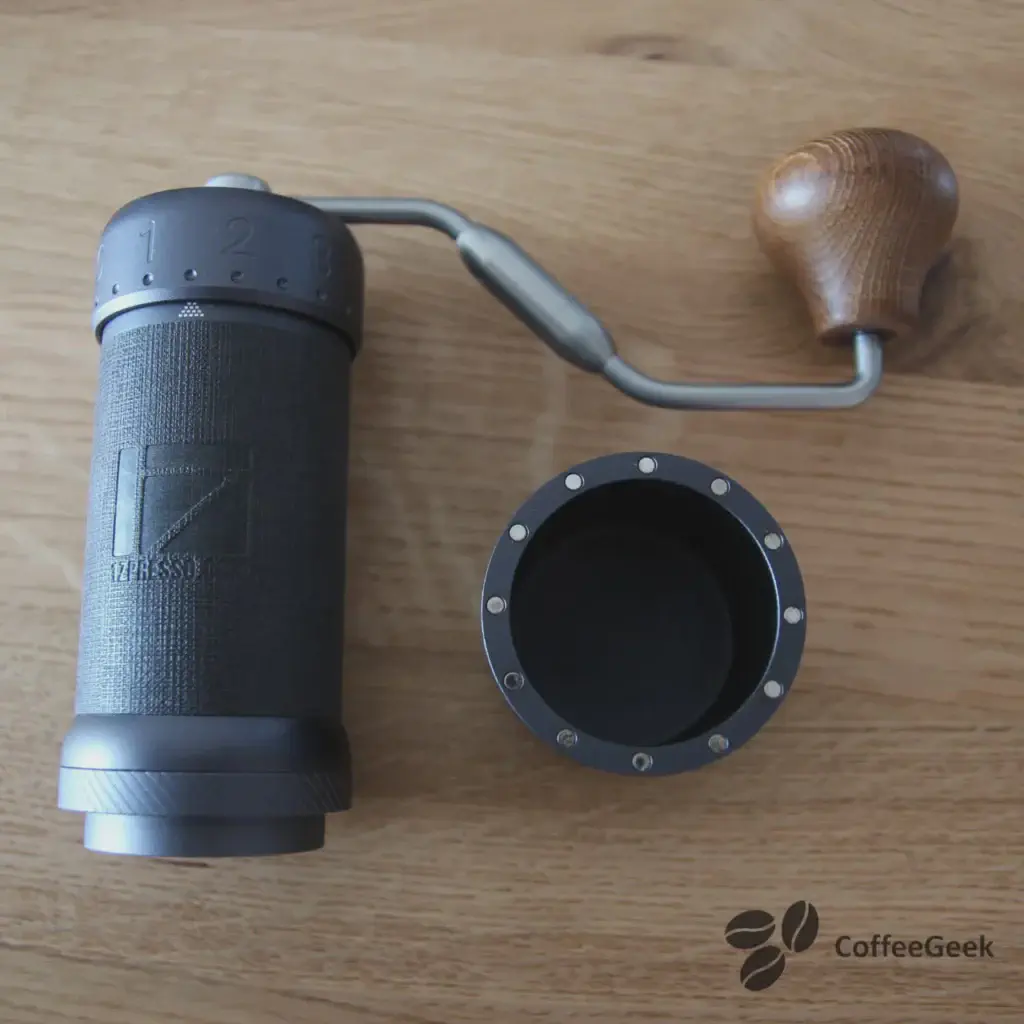
Another feature I appreciated with the magnetic attachment of this container is the addition of a recess in its design. This prevents the container from detaching when pressed at an angle during grinder use. This design makes accidental detachment of the container in such circumstances much more difficult.
The adjustment dial
The adjustment dial is located on the top of the grinder, on the outside, allowing burr spacing of 8 µm per click. This precision is particularly suited to espresso as it promises very fine adjustment. With other grinders, especially those adjusted from the bottom, this level of precision is not achieved and sometimes, in the cup, the ideal setting lies between two clicks.
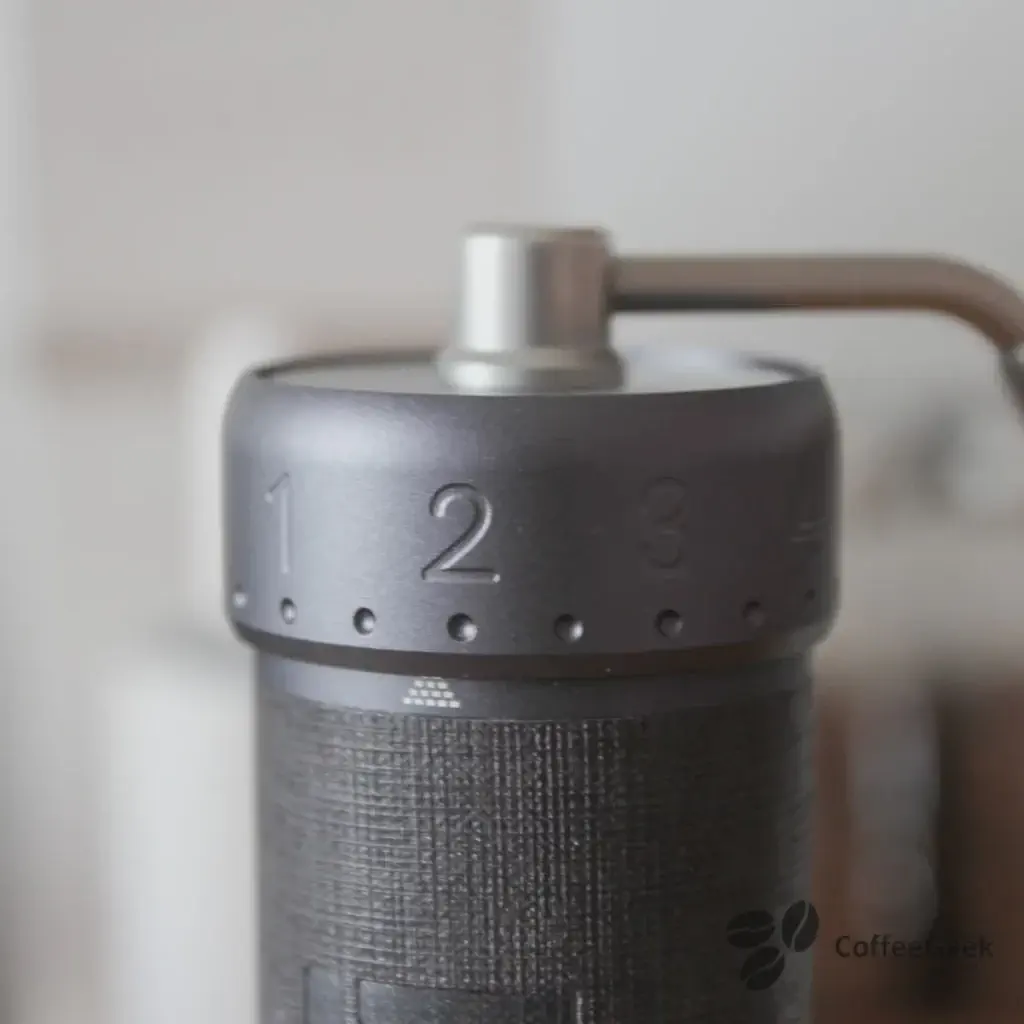
Below is a grind settings chart for the 1Zpresso J-Ultra.
This chart is a French translation of the original.
The burr
The J-Ultra burr is 48 mm in diameter and is designed for espresso. In the cup, I’ll come back to this, but it’s confirmed.
If you’re looking for a coffee grinder dedicated to espresso, consider three important elements:
- Adjustment fineness: The J-Ultra’s 8 µm precision per click allows for very fine adjustment, essential for espresso.
- Burr size: Larger burrs (47-48 mm) reduce grinding time. For example, with smaller burrs (38-40 mm), it takes about 1 minute 30 seconds to grind by hand. With 47-48 mm burrs, the grinding time for 16 g of coffee is about 40 seconds.
- Burrs designed for espresso: Grind quality depends on its consistency. A large disparity in the size of grind particles negatively affects the coffee’s taste. Some burrs are optimized for consistent and fine grinding, essential for espresso. Other burrs can be versatile, offering grinding consistent enough for pour-over and espresso, but without reaching the quality of dedicated burrs.
These aspects are crucial for achieving quality espresso.
Find the 1Zpresso J-Ultra coffee grinder on Amazon affiliate linkThe 1Zpresso J-Ultra: your ally for perfect espresso
I hesitated between using my La Pavoni or my Lelit Mara X to present an espresso made with the 1Zpresso J-Ultra. I finally chose my Lelit Mara X, as I haven’t talked about it for a while (and it’s easier to take photos of the extraction than with my La Pavoni). To focus on using and handling the grinder, I decided not to go into the details of the steps for making an espresso, as these topics have been covered in more detail in other articles.
To make my espresso, this time I’m going to grind 18g of coffee, because today I feel like changing my usual water/coffee ratio by concentrating it a bit.
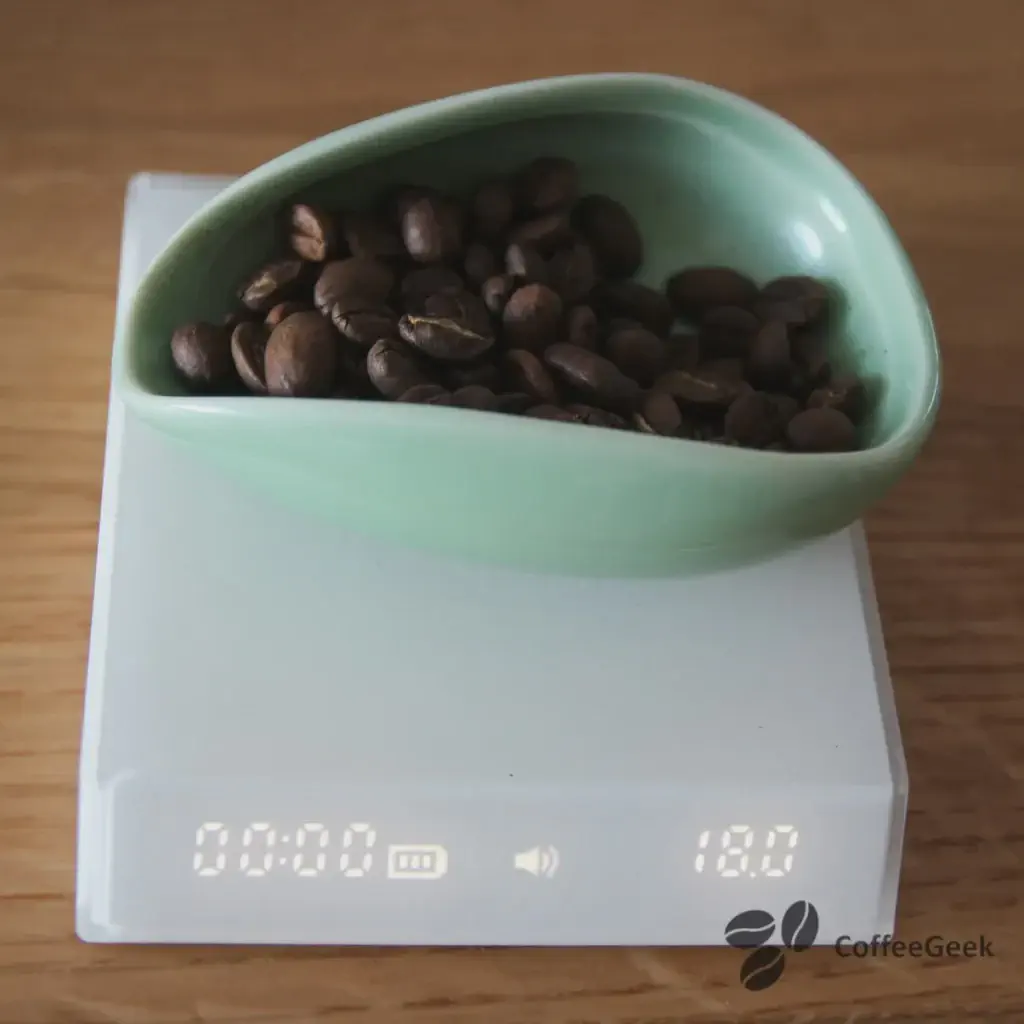
Using my scale, I weigh 18g of coffee and add a few drops of water to reduce the static electricity that can appear when using the grinder. This static electricity causes the appearance of clumps and coffee retention within the grinder.
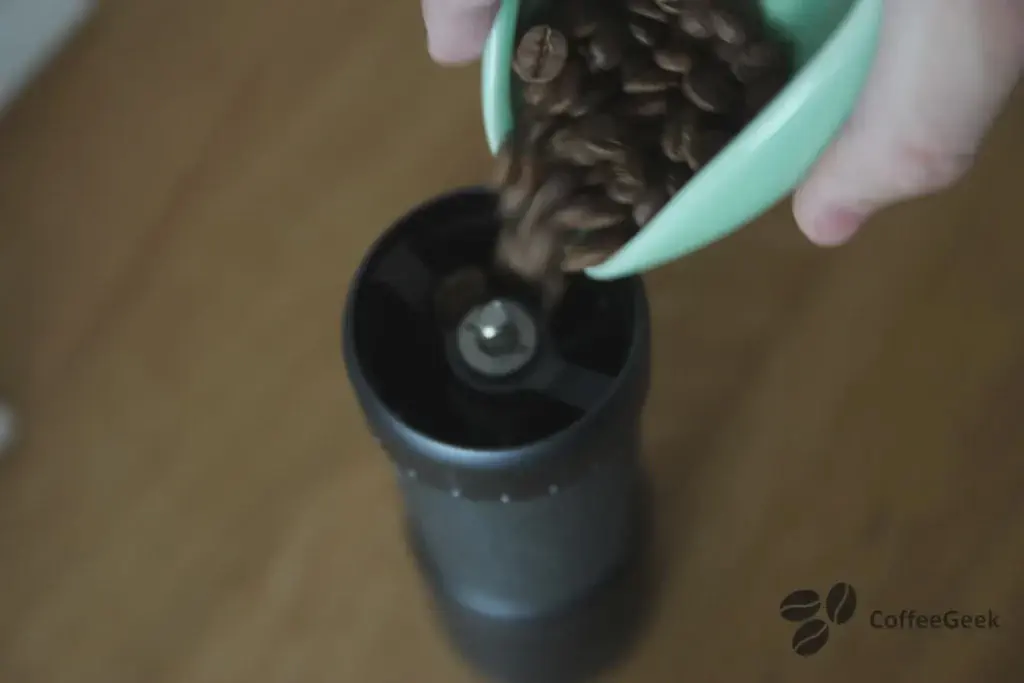
Next, I transfer the coffee beans into the grinder to grind them. The opening, which is wide enough, allows you to pour the beans without spilling any.
Then, I unfold the crank and start grinding. To give you an idea, to grind 18g of coffee with this grinder, I use the following setting: one complete turn of the dial then position 1.0. To grind all the coffee, it took me between 40 and 50 seconds.
What is the retention of the 1Zpresso J-Ultra?
To measure the retention of coffee by this grinder, I first weighed the coffee before grinding it, then weighed it again once in the portafilter. The photos speak for themselves: the retention is extremely low with this grinder.
From experience, I know that retention can occur in two main places on a hand grinder:
- At the burr exit: This retention can be easily reduced by using the RDT technique (Ross Droplet Technique).
- In the catch cup, due to its shape or the materials used. I have previously used high-end grinders where the manufacturer had placed a ridge inside the catch cup. This ridge, intended to hold the catch cup attachment system, trapped coffee every time it was poured into the filter.
With the 1Zpresso J-Ultra, no problem. The manufacturer has opted for a gentle slope instead of a rim, which doesn’t retain coffee. Additionally, the paint used is of very good quality and doesn’t cause retention. I should mention that retention is greatly reduced by using the RDT technique. You should also be aware that during initial uses, retention may be higher because the grinder is charged with static electricity due to plastics from shipping and manufacturing.
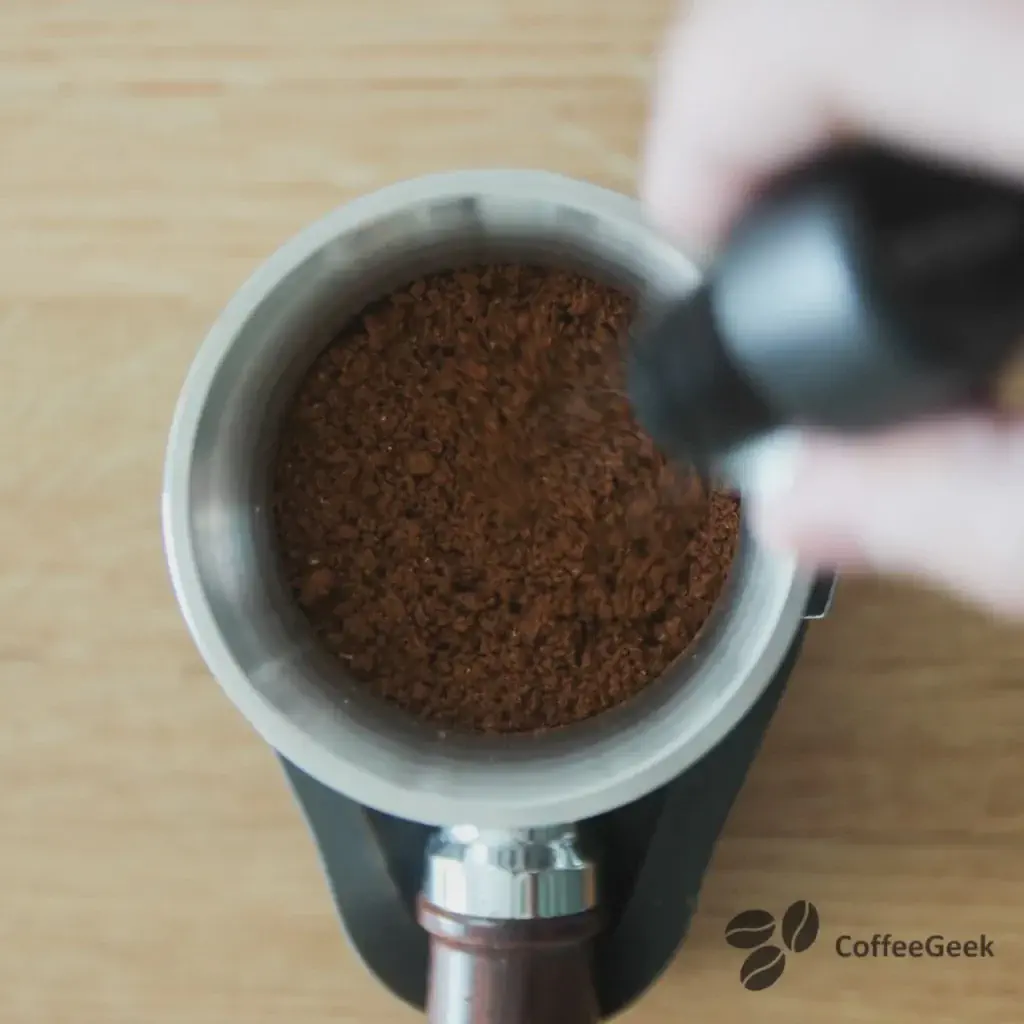
Once the coffee is ground and poured into the portafilter, to minimize channeling as much as possible, I use my WDT to distribute the coffee evenly before tamping straight with my leveling tamper. Then, I add a puck screen.
My Lelit has been on for a few minutes, my cups are nice and hot, and my portafilter is ready. I can pull my shot.
My extraction is done in 25 seconds, at 9 bar (my Lelit Mara X has flow control) with 40 ml of coffee in the cup. Below are images at different moments of the extraction.
And here is the final result:
The photo shows the coffee obtained with the 1Zpresso J-Ultra coffee grinder and my Lelit Mara X V2. The flavor wheel below expresses, through a chart, my taste experience when tasting this coffee.
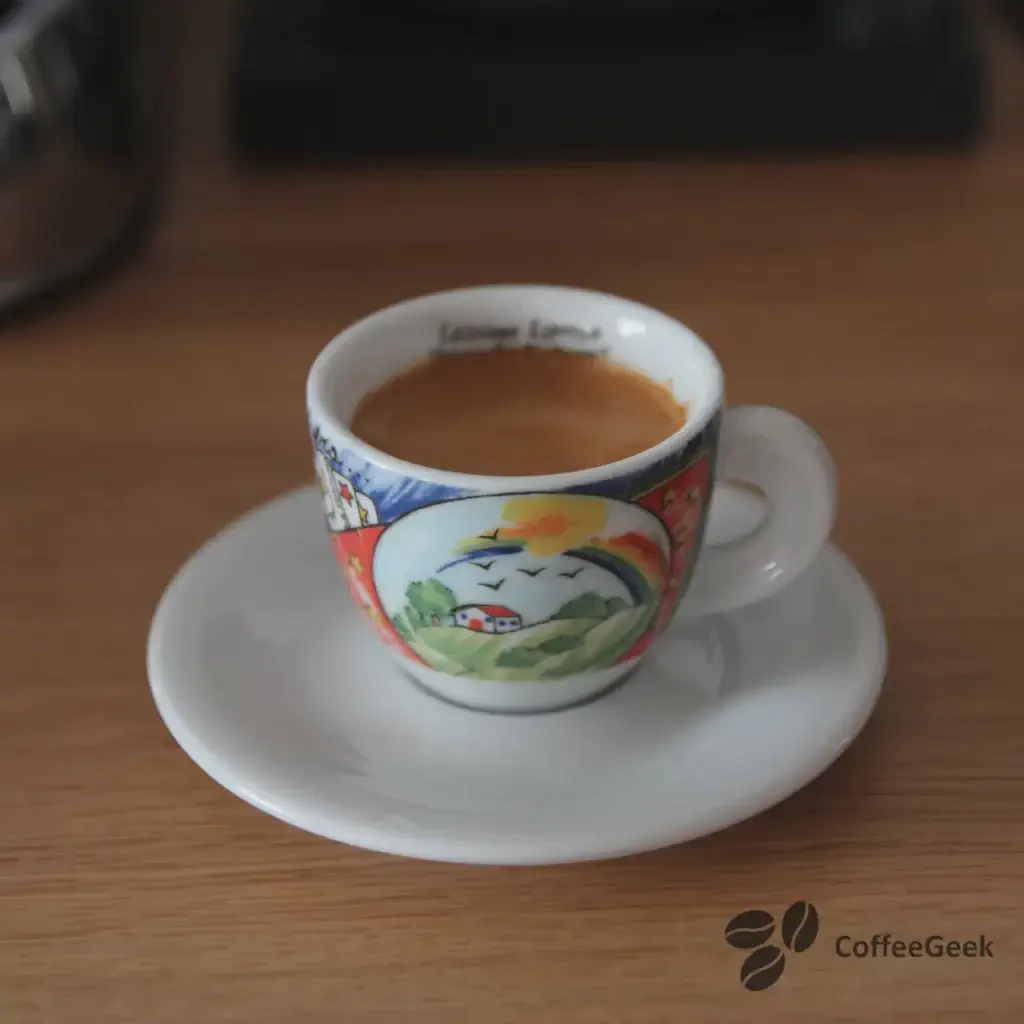
Espresso cup Ancap
Sensory profile
add flavor wheel
Coffee information
- Country of origin: Honduras Uluma
- Coffee type: Arabica - Typica / Pacas
- Altitude: 1200 - 1700m
- SCA Score: 84/100
- Roaster’s description: a complex, highly aromatic coffee, with bright and lively acidity and a smooth and velvety body.
Can we make V60 with a 1Zpresso J-Ultra?
Yes, you can use an espresso-dedicated coffee grinder for V60. However, as mentioned in the article section on burrs, some burrs are designed to be more efficient with specific grind sizes. Thus, some burrs will be more efficient than the 1Zpresso J-Ultra for pour-over / V60. I tested the same coffee I use for espresso, but in V60. The coffee had a roast that was perhaps a bit dark for V60, which generally prefers very light roasts, but my coffee was really delicious.
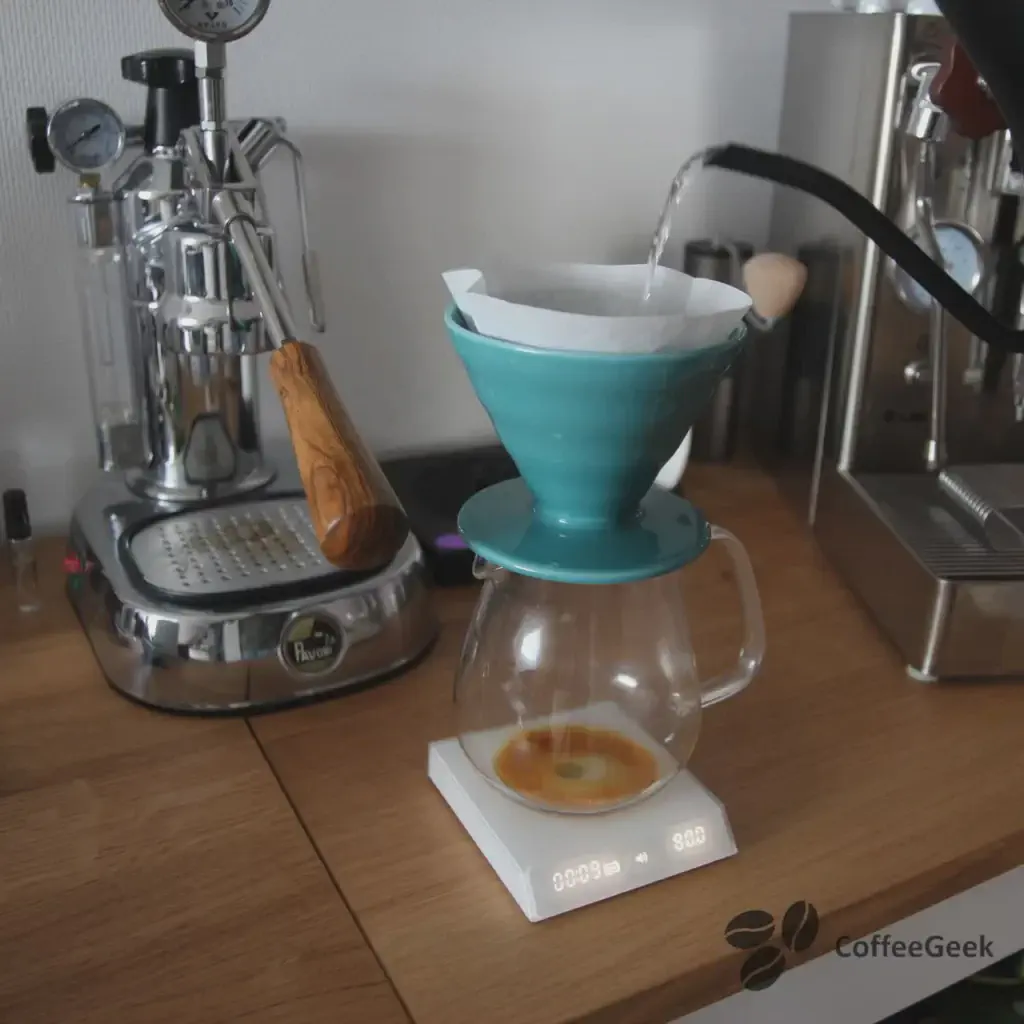
As a carafe, I use my Kinto teapot which is V60 compatible.
How to disassemble the 1Zpresso J-Ultra?
To disassemble the 1Zpresso J-Ultra, simply unscrew the nut holding the central shaft while blocking the burr with your finger, then remove the burr. Next, using the brush and pump provided, you can clean the grinder.
Below, a photo of the burrs’ condition after several coffees without having cleaned them.
It is also possible to disassemble the fixed burr to clean the grinder even more thoroughly.
Conclusion: Is the 1Zpresso J-Ultra the best grinder for espresso?
The J-Ultra is a premium coffee grinder, remarkable both for its build quality and its results in the cup. Honestly, I found no flaws with this grinder. Its many advantages include an attractive design, excellent ergonomics, very precise adjustment with numerous clicks, and the ability to disassemble and align the burrs if necessary (a rare operation). It also comes with a carrying case and accessories.
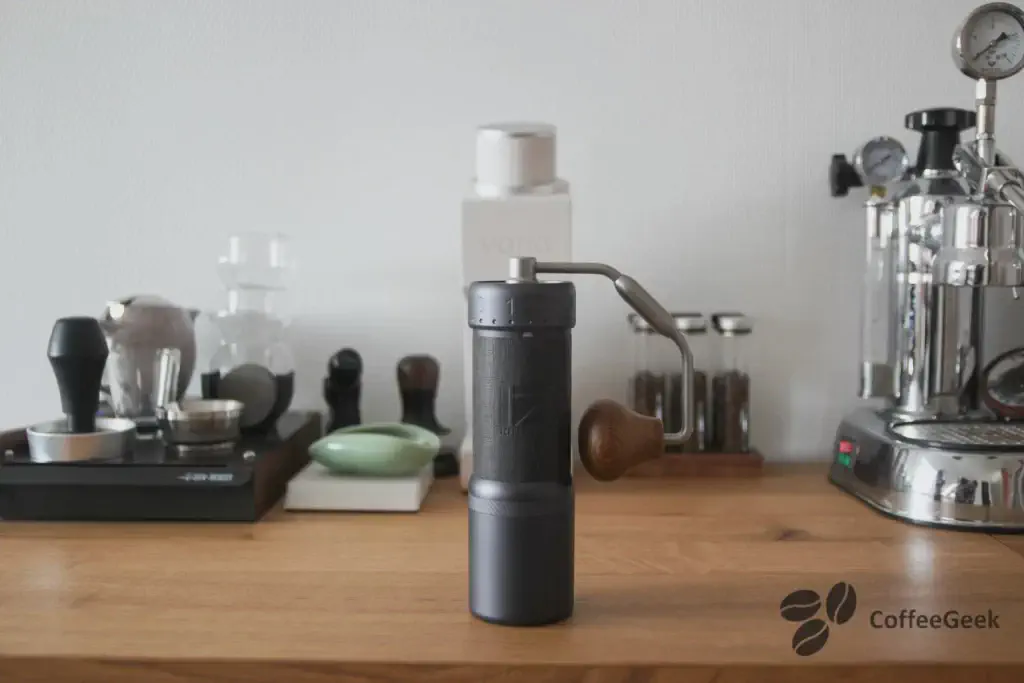
Compared to the other grinders featured on the site (Kingrinder, El Comandante C40, Timemore S3, Apollo by BPlus), the 1Zpresso J-Ultra affiliate linkis the best for espresso. Although the cup result is similar to that of the Apollo or VS3 (which have specific burrs for espresso), the handling of the J-Ultra is significantly superior. The El Comandante C40 and Timemore S3 are less effective for espresso, as their burrs are more designed for pour over and their settings are less suited to espresso. The Kingrinder K6, with its hybrid burr, is less performing for espresso but offers good results at a lower cost.
1Zpresso J-Ultra affiliate linkIn conclusion, if your budget allows and you focus on espresso extraction, the 1Zpresso J-Ultra is the ideal choice. If your budget is more limited and you also want to make pour over, the Kingrinder affiliate link" rel="">Kingrinder is a good alternative.
I have decided to award the 1Zpresso J-Ultra a rating of 5/5.
★★★★★
- Case with accessories included
- Very good handling
- Retractable handle
- Very precise adjustment
- Excellent espresso grind
- Disassemblable
- The price
